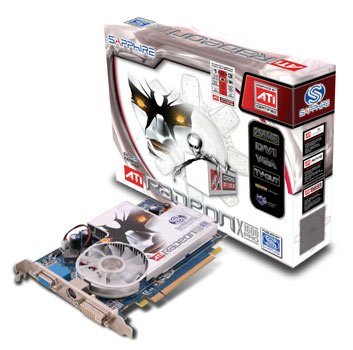Sapphire X1600 Pro CrossFire Review
ATI’s Mainstream CrossFire Soultion Gets Tested
A few weeks ago we took a look at the low priced Sapphire X1600 Pro and decided that for the price it was hard to beat. Today we take a deeper look at the performance of the X1600 Pro this time focusing on how well a pair of these perform in CrossFire.

For around $200 you can pick up a pair of these Sapphire X1600 Pro 256MB and when coupled with a CrossFire enabled motherboard this has the potential to be a great performance bargain.
For today’s testing we’ve swapped motherboards to the Asus A8R32-MVP. This motherboard is based on the new ATI RD580 chipset and features dual 16x PCI-Express lanes. This gives us 16 more PCI-E lanes dedicated to the video card than the RD480 boards and should allow the X1600 Pro to perform a bit better while running in CrossFire.
Why do the PCI-E lanes matter for this version of CrossFire? Because the X1600 Pro relies solely on the motherboard to transmit the data between the two video cards, meaning no dongle, no bridge, no Master Card. Running two cards together doesn’t get any easier than this!
Installing the pair of Sapphire X1600 Pro’s is straightforward. Simply insert them into the board, connect your monitor cable to one of the cards and away you go. After booting into Windows you’ll need to install the Catalyst driver, or simply allow it to detect the card if this isn’t a fresh install. After the card is detected you can go into the Catalyst Control Panel and enable CrossFire. After a couple of screen flashes and a few seconds of waiting you’re now ready to play with CrossFire and have the ability to nearly double gaming performance in applications that are multi-GPU ready.

Comments are closed.